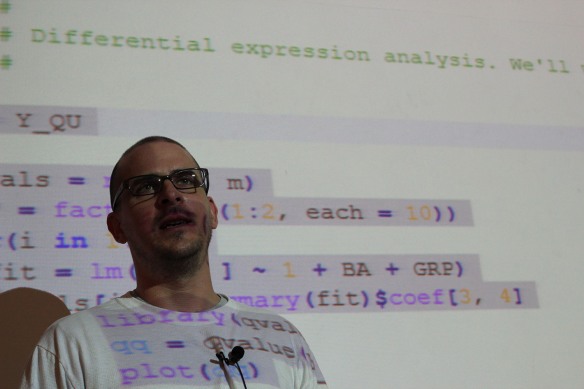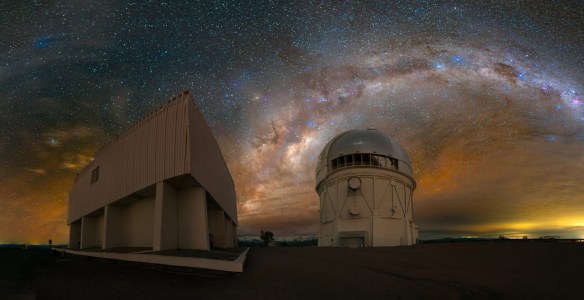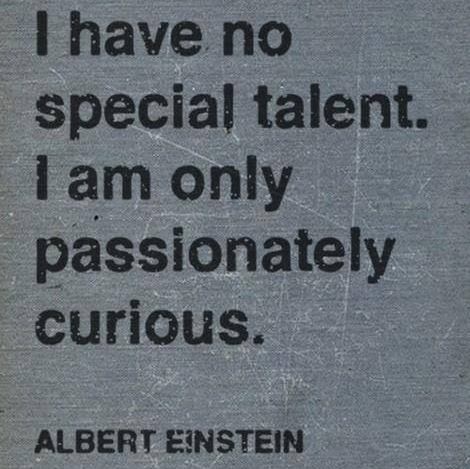This weekend as part of August commencement ceremonies, Texas A&M University will award diplomas to the largest summer class in its 140-year history — a group that includes the first two graduates of one of its newest degree programs, the bachelor’s of science in statistics. Texas A&M statistician Alan Dabney, one of two faculty advisors for the program, agreed to summarize his thoughts on the program’s historic first year — 12 months that helped establish a firm foundation for both the students enrolled and the Department of Statistics, as well as within a broader profession with the powerfully appealing potential to impact so many others.
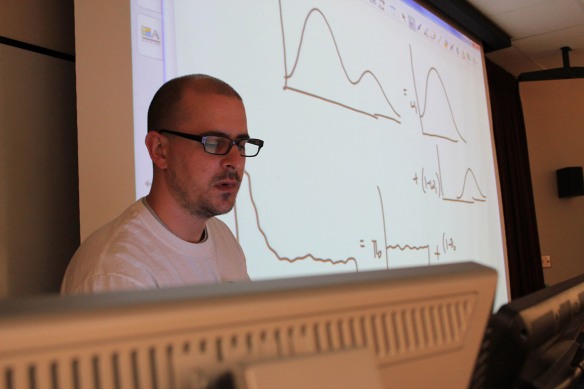
In addition to serving as a faculty advisor for the undergraduate program in statistics, Texas A&M statistician Dr. Alan R. Dabney is one of two university faculty members appointed to 2016 University Professorships in Undergraduate Teaching Excellence (UPUTE) at Texas A&M University.
* ~ * ~ * ~ * ~ *
Statistics currently is one of the hottest career options around! A few key indicators: LinkedIn has listed statistician as one of the top 5 “Hottest Skills” sought by employers in each of the past two years; CareerCast named both statistician and data scientist as among the top 5 professions for two consecutive years; U.S. News & World Report ranks statistician as the top job in business, top job in STEM and No. 17 on their list of 100 Best Jobs overall; and the Bureau of Labor Statistics ranked it as the 9th fastest growing occupation between 2014 and 2024.
In response to the growing demand for statisticians worldwide, Texas A&M University introduced a brand new undergraduate degree program in fall 2016. While the Department of Mathematics has offered an applied mathematical sciences (APMS) degree with specialization in statistics, the new bachelor’s of science degree in statistics offers a unique opportunity for Aggies to kick-start their statistical careers and set themselves up in a rewarding vocation.
If you’re considering a career in this multidisciplinary field, read on to find out more about the program, the successes of our earliest graduates and where we’re headed.
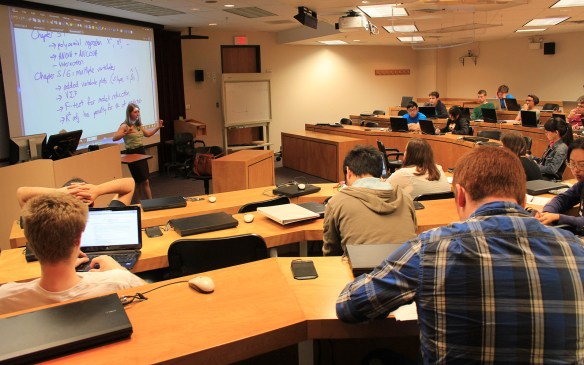
After providing fundamental statistics instruction for the past five decades in support of hundreds of undergraduate degree programs across Texas A&M University, the Texas A&M Department of Statistics began offering its own bachelor’s of science degree in fall 2016.
Bachelor’s of Science in Statistics
For the first time in history beginning last fall, Texas A&M undergraduate students have the opportunity to earn an undergraduate degree in statistics!
The program is delivered by an already distinguished department recognized as one of the nation’s top graduate program providers. As such, the bachelor’s of science in statistics has been designed to rigorously prepare students to enter the workforce or continue their studies in graduate school.
Through newly developed classes, the program introduces students to the theoretical and applied fundamentals of statistics and data science. However, because statistics is such a multidisciplinary and collaborative profession, the bachelor’s also requires students to complete four classes in an outside area of specialization. This sets students up to confidently enter a workforce where collaborating with non-statisticians will be an important part of their jobs.
While the department has outlined some popular areas for this outside study — including business, math, computer science, biology, engineering and pre-med — students are given the flexibility to choose their own paths of specialization. In many cases, if specialization classes are carefully chosen, students can also graduate with a minor to add to their employability as a statistician.
In the final year of study, students are then required to apply their skills to solve substantial, real-life problems in a capstone project under the direction of a faculty member. The capstone is intended to draw on all completed courses and provide a comprehensive exercise in statistical application. We expect it to be excellent preparation for both a career as a professional analyst and for conducting fundamental research.
One notable highlight of the new program is the introductory survey class STAT 182 that shows students how statistics is used in the modern world. Last year, guest speakers were invited to address the class each week to inspire our future statisticians with real-life stories. Among these speakers were renowned statistician Nate Silver from fivethirtyeight.com; senior statisticians from Google, Facebook, Biogen, MD Anderson Cancer Center and Lawrence Livermore National Laboratory; recruiters from Deloitte, Goldman Sachs and other industry juggernauts; and several distinguished professors, both from our own department and around the world. This class gives our students a highly valuable peek behind the scenes at cutting-edge statistics in the real world. Screencast recordings of the guest speakers from this past spring semester are available on YouTube.
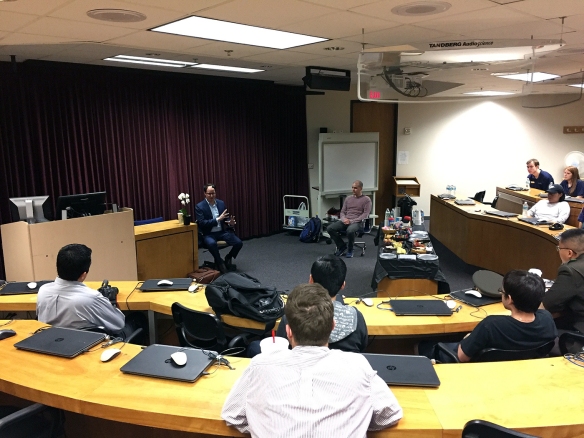
Statistician and FiveThirtyEight.com founder Nate Silver (left, front of room) fields questions from students and Texas A&M statistician Alan Dabney (right, front of room) in the Texas A&M Department of Statistics during a March 2017 visit to Texas A&M.
Scholarships in Statistics
Although it’s early days for the new statistics undergraduate program, the department has already managed to secure a number of scholarships to enhance the educational experiences for our top-tier students.
Four students enrolled in the bachelor’s of science in statistics — Jose Alfaro, Steven Broll, Caroline Lee and Xin (Thomas) Su — have received $2,500 awards for use during the course of the 2017-2018 academic year. Two of these scholarships are sponsored by Shell Oil, while the other two come directly from the Department of Statistics.
To learn more about the scholarships available to statistics undergraduates, click here.
Internships in Statistics
Another valuable feature of the bachelor’s of science in statistics is the opportunity to obtain internships.
Two students spent their summer gaining paid, hands-on experience in dealing with genomic data sets, courtesy of Advanta Seeds, an international agronomic and vegetable seed company. A third student is set to work with the Texas A&M Office of Undergraduate Studies to learn from student feedback on academic advising experiences, while another will work with the University Honors Program to develop predictive models for identifying at-risk students. Finally, a fifth will work with a faculty member in the College of Nursing to explore and analyze scores on nursing standardized tests.
Additional internship opportunities are in constant development.
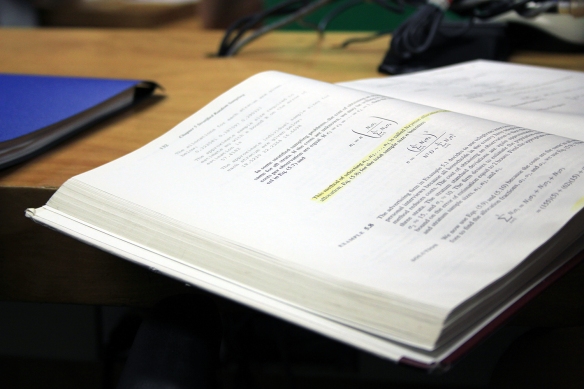
Career Options for Statistics Graduates
Career options for graduates with a bachelor’s of science in statistics are almost endless! Graduates will be able to pursue a career in any of the numerous industries in which there is a need for statisticians. Possible venues include businesses ranging from small to large, governmental agencies, hospitals, the tech industry, the pharmaceutical industry and universities.
In addition, our graduates will be well-prepared to continue their studies in graduate school.
To learn more about statistical career options, see the American Statistical Association website.
A&M Undergraduate Statistics Graduates
After the first year of operation, we’re proud to announce the graduation of two bright and gifted students from the bachelor’s of science in statistics program. Here’s a little about their journeys and experiences at Texas A&M:
Tessa Johnson
Tessa didn’t come to Texas A&M, planning to major in statistics. Instead, she chose a field that she enjoyed — mathematics — and would allow her to study the many different things in which she was interested.
As one of the first two graduates of this new degree program, Tessa says she found the experience to be invaluable. She enjoyed the fact that the program allows you to take your study in almost any direction that you’d like.
After graduating with outstanding grades and a double major, Tessa was awarded the prestigious James B. Duke Fellowship to continue her study of statistics in the Ph.D. program at Duke University. She feels that Texas A&M has prepared her very well for grad school and hopes that the department there allows for the same kind of flexibility for student-directed research.

Tessa Johnson ’17 (left) visits with Texas A&M statistician Alan Dabney, one of two faculty advisors for the undergraduate program in statistics. Johnson and Sharon Wang ’17 each received two of the most versatile and powerful undergraduate degrees across the campus and nation on August 11: a bachelor’s in applied mathematical sciences and the first bachelor’s in statistics awarded in Texas A&M history.
Sicheng (Sharon) Wang
Sharon took a few statistics classes before enrolling in the new program. After enjoying them, it felt like a natural move to add a statistical major.
The thing she says she enjoyed most about the new program was the ability to be mentored by Texas A&M’s top-level statistics professors. Not only did she find them to be excellent educators, but she was also impressed by their willingness to offer extra help at any time.
Graduating with exceptional grades, Sharon’s been admitted to the data science Ph.D. program within the Department of Computer Science and Engineering here at Texas A&M. This move will take her one step closer to her goal to become a professor in an area that’s both challenging and a passion of hers.
For any freshmen who are considering pursuing their own bachelor’s of science in statistics, Sharon recommends trying out a few statistics courses beforehand. She also suggests talking to the program advisors who are more than happy to talk with students about the many different data-driven career options they can pursue.
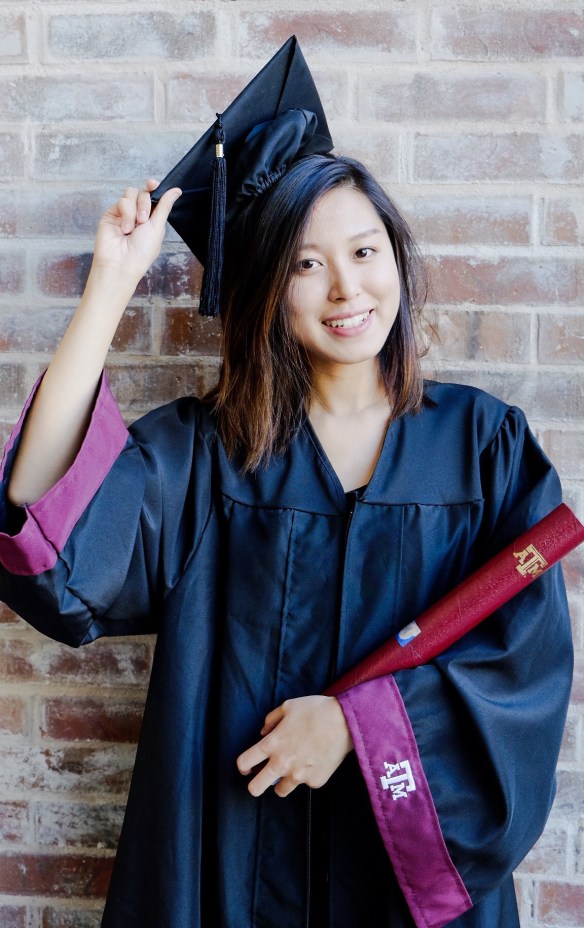
Sicheng (Sharon) Wang, pictured with her Texas A&M diploma.
The Future of Undergraduate Statistics at Texas A&M
We have 35 current majors and an additional 35 incoming freshmen and transfers in the fall semester. Due to the large amount of interest in statistics among students and parents, these numbers are expected to steadily grow. As the program grows, here’s a sneak peak at the department’s future plans.
Undergraduate Students Association
Just as the graduate program has an active student association, we are in the process of forming the Statistics Undergraduate Student Association (SUSA). SUSA will serve to connect our students with each other, the graduate students and the faculty, in addition to providing opportunities for career development through job talks and recruiter visits.
Dedicated Academic Advisor
In June, the Department of Statistics welcomed a dedicated undergraduate academic advisor, Alyssa Brigham. Alyssa is available to help students decide which classes to take, manage student interactions with the university and advise on career opportunities and preparation.
Honors Program
We also plan to develop an honors program for high-performing statistics undergraduates. This will involve the creation of at least four dedicated honors classes in core areas of the degree program to teach and refine skills at the highest level.
Combined Bachelor’s and Master’s Program
Another option for future high-performing statistical students will be to complete a fast-tracked, combined B.S. and M.S. degree. This will allow students to complete both the undergraduate and graduate degree programs in five years, when it would otherwise take six.
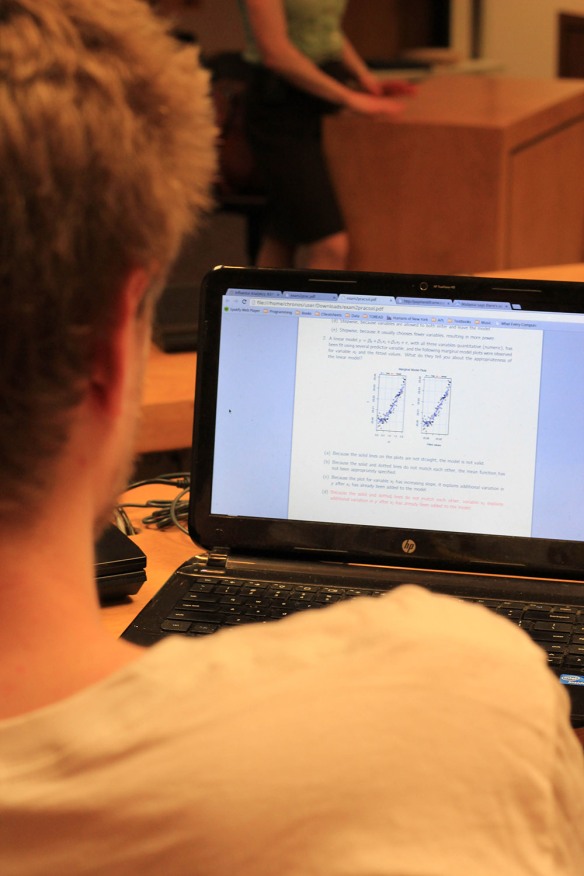
Why Texas A&M for Undergraduate Statistics?
As you can see, the new bachelor’s of science in statistics presents students with a great opportunity to gain early entry into a promising career path. But all that aside, why choose Texas A&M for your study? Why, indeed:
- Highly ranked statistics department – The new undergraduate degree has been developed by a department that’s already built a solid reputation in the statistical world. We’re renowned for offering students access to a wide breadth of real-world problems in a vast array of application areas, including public health, engineering and spatio-temporal applications, such as climate change, business analytics, forensics, astronomy and many more. Graduates from the department are highly sought after and respected in both academics and industry.
- Excellent curriculum – Texas A&M’s program is comprehensive, rigorous and highly flexible. It has been designed to prepare undergraduates on a level comparable to that of many master’s of science programs.
- Invaluable connections – With established connections to local businesses and other university faculties, the undergraduate program allows you to network and gain experience in working with a wide variety of potential employers. Our contacts include oil and gas companies, banks, cancer research centers, national laboratories and other federal agencies, and leading researchers around the world.
- A&M = a great university – With a solid reputation, strong traditions and community, there are countless reasons why you’d be proud to call yourself an Aggie.
To learn more or inquire about enrolling in the bachelor’s of science in statistics program, visit the degree overview webpage.
Thanks and gig ’em!
